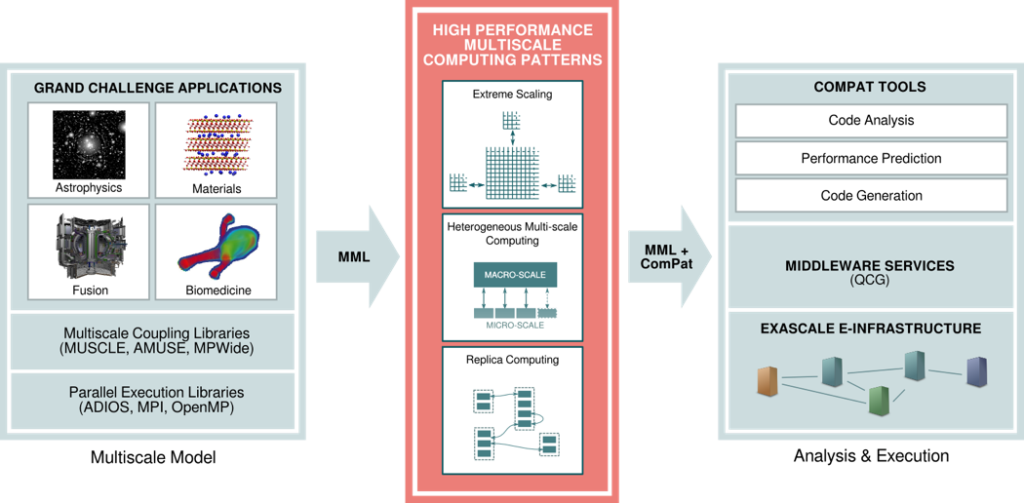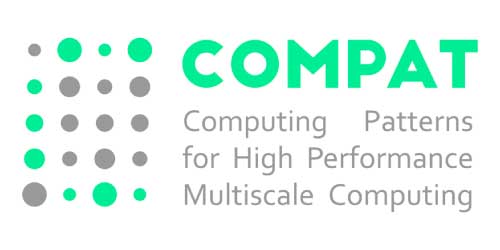Multiscale phenomena are ubiquitous, and they are the key to understanding the complexity of our world. Our Main objective is to develop generic and reusable High Performance Multiscale Computing algorithms to address the exascale challenges of heterogeneous architectures and be able to run multiscale applications with extreme data requirements while achieving scalability, robustness, resiliency, and energy efficiency.
Nine grand challenge applications from four different science domains demonstrate the viability of our approach. Nuclear fusion: the interactions between turbulence at very small scales and the large-scale plasma behaviour holds the key to control its magnetic confinement in order to produce clean and carbon free energy for the indefinite future. Astrophysics: the formation processes of stars in their clustered environment, as well as the origin and propagation of structure in the stellar disk of the Milky Way Galaxy. Materials science: prediction of the materials properties of macroscopic samples of matter based on the specification of the atoms and molecules comprising it. Biomedicine: pathophysiology of vascular disease, as well as to provide personalised models of the vasculature in near to or real time to support clinicaldecision-making.
The approach is to identify three multiscale computing patterns, realise generic algorithms for all three, implement the selected grand challenge applications as tailor-made instantiations of the computing patterns, which will serve to demonstrate the efficacy of the new algorithms. The insight we gain en-route will be used to develop performance prediction models to anticipate the efficiency of the applications on future exascale machines.
The Multiscale Modelling and Simulation Framework (MMSF) is a theoretical and practical way to model, characterise and simulate multiscale phenomena. MMSF currently comprises a 4-stage pipeline, going from developing a multiscale model to executing a multiscale simulation.
Our approach is based on Generic Multiscale Computing Patterns that allow us to implement customized algorithms to optimise under generic exascale application scenarios. The extreme Scaling computing pattern where one (or a few) of the single scale models in the overall multiscale model dominates all others by far, in terms of required computing power. In the Heterogeneous Multiscale Computing pattern, we couple a macroscopic model to a large and dynamic number of microscopic models. Replica Computing is a multiscale computing pattern that combines a potentially very large number of terascale and petascale simulations (also known as ‘replicas’) to produce robust outcomes
The multiscale computing patterns determine the ordering and composition of models that are coupled within a multiscale application. To orchestrate the execution of the application on HPC resources and specifically exascale systems, we require a comprehensive technology stack.





